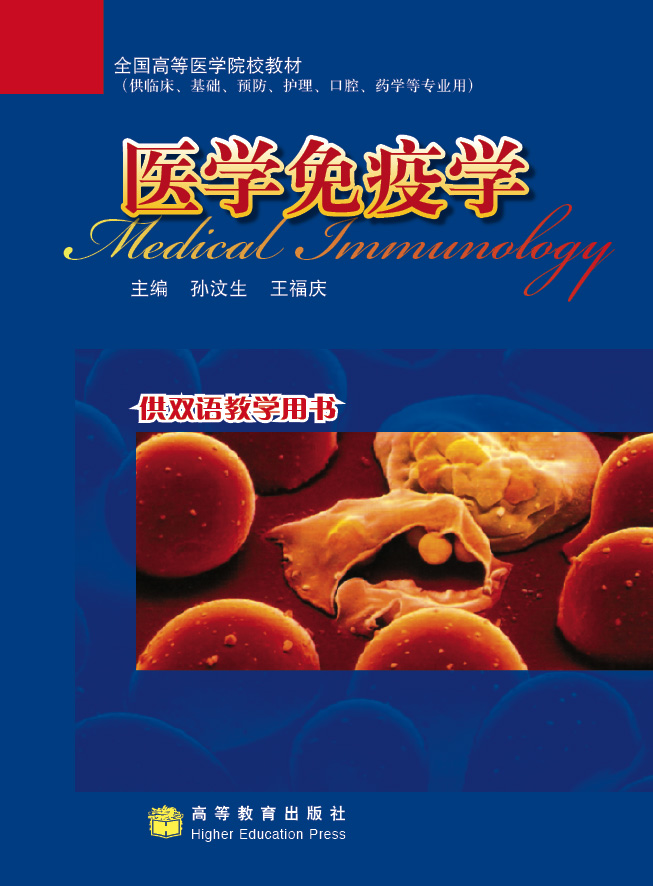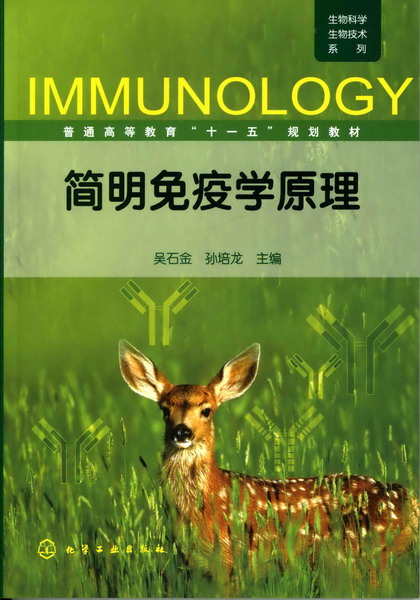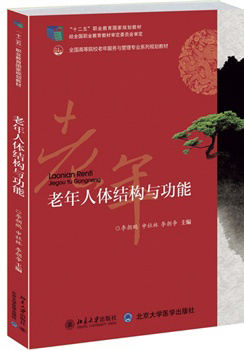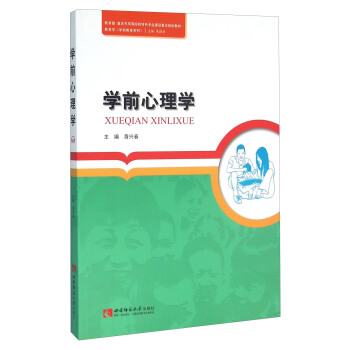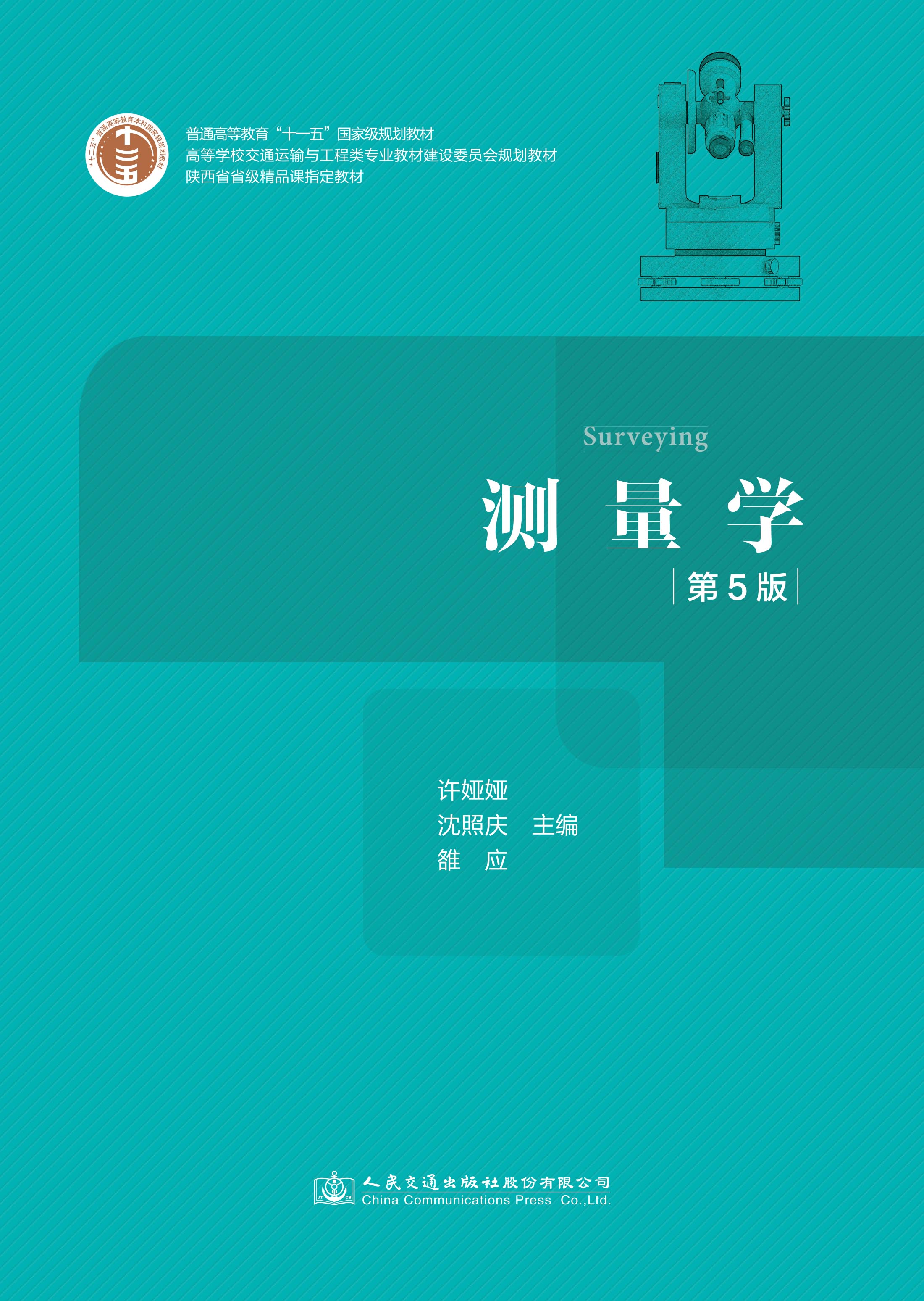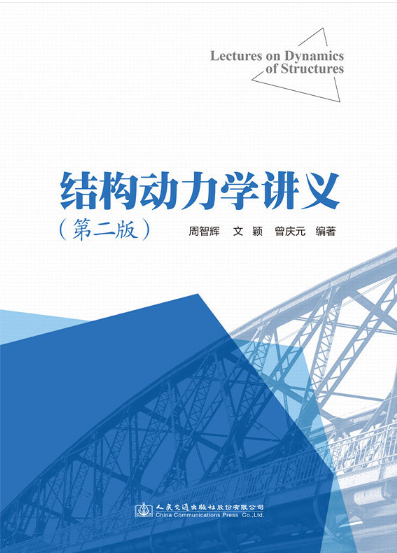- 高等教育出版社
- 9787040202540
- 1
- 246619
- 平装
- 16开
- 2006-08-23
- 610
- 309
- 医学
- 基础医学
本教材由国内十几所高等医学院校在一线从事免疫学教学的教师共同编写而成,希望为教师和学生提供一本比较适用于双语教学的用书。全书在框架安排、内容的涵盖与繁简取舍、新知识点的介绍、图表设计等方面力求使读者容易接受,并采用多种形式使学生获取专业英文的感知。全书共27章,包括免疫学概论、免疫分子、免疫细胞与免疫应答、免疫与临床及免疫学应用五个部分。为拓宽学生学习专业英语的途径,本书各章前设有英文摘要,章后有英文思考题,对免疫学新的进展和重点内容在正文相应位置加用英文文本框介绍,书后附有免疫专业词汇英文解释。为增加免疫学基础理论与临床应用结合,书后附有代表性的英文病例、中英文索引、推荐的中英文参考书和英文网站。本书可供高等医学院校本科生、七年制、八年制学生使用,同时也适用于研究生备考。
第一篇 免疫学概论 Introduction of Immunology
第一章 免疫学发展的历史回顾 History of Immunology
第一节 免疫接种与抗感染免疫 Vaccination and Immunity against Infectious Diseases
第二节 免疫的科学试验与理论研究 Experimental and Theoretical Studies of Immunology
第三节 免疫学——一个独立学科的诞生 Immunology:An Independent Discipline Came into Being
第二章 现代免疫学研究及发展策略 Research and Development Strategies of Modern Immunology
第一节 免疫的概念、功能与表现 Concept of Immunity and Its Functions and Manifestations
第二节 固有免疫及适应性免疫 Innate Immunity and Adaptive Immunity
第三节 现代免疫学研究的热点与发展策略 Hot Spots in Research and Strategies of Modern Immunology
第三章 免疫系统概述 General Introduction of Immune System
第一节 中枢免疫器官 Central Immune Organs
第二节 外周免疫器官 Peripheral Immune Organs
第三节 淋巴细胞及其再循环 Lymphocytes and Recirculation
第四节 免疫分子 Immune Molecules
第四章 抗原 Antigens
第一节 抗原的特性及其影响因素 Properties of Antigens and Factors Affecting Immunogenicity
第二节 抗原的特异性和交叉反应 Specificity and Cross-Reaction of Antigens
第三节 抗原的分类 Classification of Antigens
第四节 医学上重要的抗原物质 Important Antigens in Medicine
第五节 超抗原 Super Antigen
第六节 佐剂 Adjuvants
第二篇 免疫分子 Immune molecules
第五章 抗体 Antibodies
第一节 免疫球蛋白的分子结构 Molecular Structure of Immunoglo-bulin
第二节 五类免疫球蛋白的特点与功能 Characteristics and Functions of the 5 Classes of Immunoglobulin
第三节 免疫球蛋白分子的Fc受体 Fc Receptors for Antibody Molecules
第四节 抗体的生物学活性 Biologic Activity of Antibody
第五节 免疫球蛋白的免疫原性 Immunogenicity of Immunoglo-bulins
第六节 人工制备的抗体 Artificial Antibodies
第六章 补体系统 Complement System
第一节 概述 Introduction
第二节 补体的激活途径 Activation of the Complement System
第三节 补体激活的调节 Regulation of Complement Activ-ation
第四节 补体受体 Complement Receptors
第五节 补体的生物学作用 Biological Functions Complement
第六节 补体系统的异常与疾病 Complement and Disease
第七章 细胞因子 Cytokines
第一节 细胞因子的共同特性 General Properties of Cytokines
第二节 细胞因子生物学活性 Biological Functions of Cytokines
第三节 细胞因子的主要种类及主要功能 Varieties and Functions of Cytokines
第四节 细胞因子受体家族 Cytokine Receptors
第五节 细胞因子与临床 Cytokines and Disease
第八章 黏附分子 Cell Adhesion Molecules
第一节 黏附分子的分类 Classification of Cell Adhesion Molecules
第二节 黏附分子的功能 The Functions of Cell Adhesion Molecules
第九章 主要组织相容性复合体 Major Histocompatibility Complex,MHC
第一节 HLA复合体的基因结构 Genetic Organization of the HLA Complex
第二节 HLA复合体的遗传特点 Hereditary Mode and Genetic Features of the HLA Complex
第三节 HLA分子结构及其分布 Molecular Structures and Distribution of the HLA
第四节 HLA分子与抗原肽的相互作用 Interaction between HLA Molecule and Antigenic Peptide
第五节 MHC的生物学功能 Biological Functions of MHC
第六节 HLA与医学 HLA and Medicine
第三篇 免疫细胞与免疫应答 Immune Cells and Immune Responses
第十章 固有免疫 Innate Immunity
第一节 固有免疫系统的组成 Components of the Innate Immune System
第二节 固有免疫系统的识别特点 Recognition Features of the Innate Immune System
第三节 固有免疫的功能 Functions of Innate Immunity
第十一章 抗原的加工与递呈 Antigen Processing and Presentation
第一节 抗原递呈细胞 Antigen-Presenting Cells
第二节 抗原加工和递呈途径 Antigen Processing and Presentation Pathways
第十二章 淋巴细胞的抗原受体与辅助分子 Antigen Receptors and Accessory Molecules of Lymphocytes
第一节 T细胞受体复合体 T Cell Receptor Complex
第二节 T细胞辅助分子 T Cell Accessory Molecules
第三节 B细胞抗原受体和B细胞抗原受体复合体 B Cell Antigen Receptor and B Cell Receptor Complex
第四节 B细胞辅助分子 B Cell Accessory Molecules
第五节 T、B细胞辅助分子在T细胞和B细胞分类中的应用 Classification of T and B Cells Based on Expression of Antigen Receptors and Accessory Molecules at the Cell Surface
第十三章 淋巴细胞成熟与抗原受体基因的表达 Lymphocyte Maturation and Antigen Receptor Expression
第一节 B细胞成熟过程 B Cell Maturation
第二节 T细胞在胸腺内的成熟 T cell Maturation in the Thymus
第十四章 T细胞介导的免疫应答 T cell-Mediated Immune Response
第一节 适应性免疫应答概述 General Introduction of Adaptive Immune Response
第二节 T细胞免疫应答 T cell-Mediated Immune Response
第三节 NKT细胞和γδ T细胞介导的免疫应答 NKT-and γδ T - Mediated Immune Responses
第十五章 B淋巴细胞活化与抗体的产生 B Lymphocyte Activation and Antibody Production
第一节 B细胞免疫应答 B cell Mediated Immune Response
第二节 抗体产生的一般规律 General Rules of Antibody Production
第三节 B1细胞对TI抗原的免疫应答 B 1 Cell Response to TI Antigens
第四节 T、B细胞活化信号的转导 Transduction of Activation Signals in T and B cells
第十六章 免疫耐受 Immunological Tolerance
第一节 免疫耐受的发现和类型 Discovery and Classification of Immunological Tolerance
第二节 免疫耐受形成的条件 The Conditions of Immunological Tolerance Formation
第三节 免疫耐受形成的机制 The Mechanisms of Immunological Tolerance
第四节 研究免疫耐受的意义及临床应用 The Significance and Clinical Application of Immunological Tolerance
第十七章 免疫调节 Immunoregulation
第一节 免疫应答的遗传控制 Genetic Control of Immune Response
第二节 分子水平的免疫调节 Molecular Immunoregulation
第三节 细胞水平的调节 Cellular Immunoregulation
第四节 整体水平的调节 Holistic Modulation of Immune Regulation
第四篇 免疫与临床 Immunity and Clinic
第十八章 超敏反应 Hypersensitivity
第一节 Ⅰ型超敏反应 Type Ⅰ Hypersensitivity Reactions
第二节 Ⅱ型超敏反应 Type Ⅱ Hypersensitivity Reactions
第三节 Ⅲ型超敏反应 Type Ⅲ Hypersensitivity Reactions
第四节 Ⅳ型超敏反应 Type Ⅳ Hypersensitivity Reactions
第十九章 抗感染免疫 Immunity to Infection
第一节 抗细菌感染的免疫 Immunity to Bacteria
第二节 抗病毒感染的免疫 Immunity to Viruses
第三节 抗真菌感染的免疫应答 Immunity to Fungi
第四节 抗寄生虫感染的免疫 Immunity to Parasites
第五节 病原体的免疫逃逸 Pathogen Immune Evasion
第二十章 肿瘤免疫 Immunity to Tumors
第一节 肿瘤抗原 Tumor Antigens
第二节 机体抗肿瘤免疫的机制 Mechanisms of Tumor Immunity
第三节 肿瘤的免疫逃逸机制 Mechanisms of Tumor Immune Escape
第四节 肿瘤的免疫学治疗 Immunotherapy of Tumors
第二十一章 移植免疫 Transplantation Immunology
第一节 同种异型移植排斥的免疫学基础 The Immunologic Basis of Allograft Rejection
第二节 同种异型移植排斥的分类及效应机制 Classification and Effector Mechanisms of Allograft Rejection
第三节 同种异型移植排斥的防治 Prevention and Therapy of Allograft Rejection
第四节 异种移植 Xenotransplantation
第二十二章 自身免疫与自身免疫病 Autoimmunity and Autoimmune Diseases
第一节 自身免疫病的基本特征及分类 The Characteristics and Classification of AID
第二节 自身免疫病的发病机制 Mechanisms of AID
第三节 自身免疫病组织损伤的机制 The Immune Damage Mechanism of AID
第四节 常见的几种自身免疫病 The Examples of Some Autoimmune Diseases
第五节 自身免疫病的治疗 Treatment of AID
第二十三章 免疫缺陷病 Immunodeficiency Diseases
第一节 概述 Introduction
第二节 原发性免疫缺陷病 Primary Immunodeficiency Diseases
第三节 继发性免疫缺陷病 Secondary Immunodeficiency Disease
第四节 免疫缺陷病的诊断和治疗原则 Diagnosis and Therapy Principle of IDD
第二十四章 生殖免疫 Reproductive Immunity
第一节 男性生殖道免疫特征 Characteristics of Immunity in Male Reproductive Tract
第二节 精浆免疫抑制因子 Immune Inhibitory Factors in Seminal Plasma
第三节 男性不育与免疫 Male Infertility and Immunity
第四节 女性生殖与免疫 Female Reproduction and Immunity
第二十五章 老年免疫 Aging Immunity
第一节 老年免疫功能的特点 Characteristic of Aging Immune Function
第二节 老年人免疫功能衰退的发生机制 Senile Mechanisms of Aging Immune Function
第三节 延缓免疫功能衰退的基本原则 Basic Principles Postponing Senescence of the Immunologic Functions
第五篇 免疫学应用 Application of Immunology
第二十六章 疫苗 Vaccine
第一节 疫苗的种类及特点 The Classification and Characteristics of Vaccines
第二节 疫苗接种 Vaccination
第二十七章 免疫学技术 Immunological Techniques
第一节 抗原或抗体的体外检测 The In Vitro Detection of Antigens Antibodies
第二节 免疫细胞的检测 The Detection of Cellular Immunity
第三节 细胞因子的检测 Detection of Cytokines
第四节 细胞凋亡的检测 Apoptosis and Its Detection
主要参考书目及免疫学相关网站
附录 Appendices
附录1 实例讨论(Case study)
附录2 词汇解释(Glossary)
中英文名词对照索引
英中文名词对照索引
编委会

